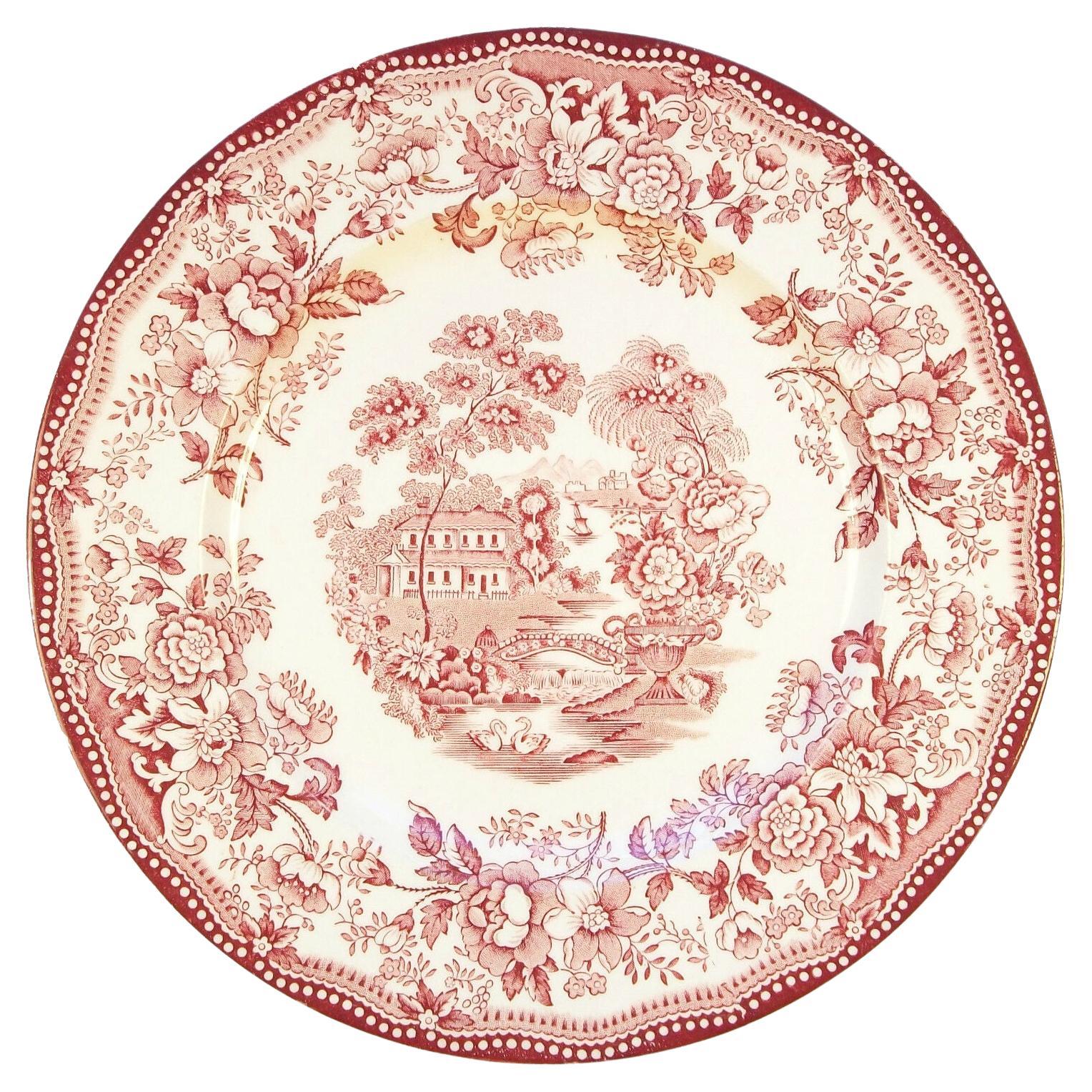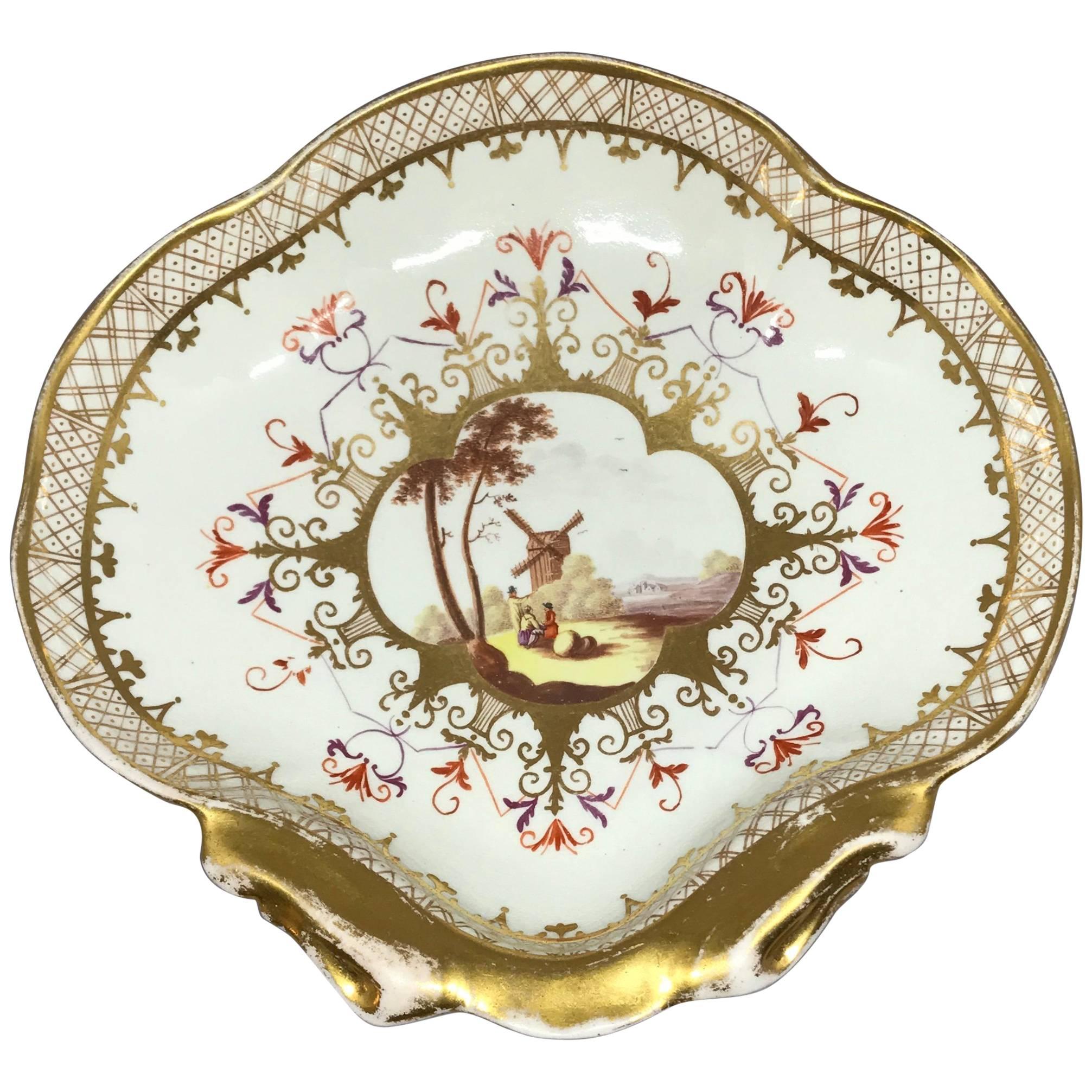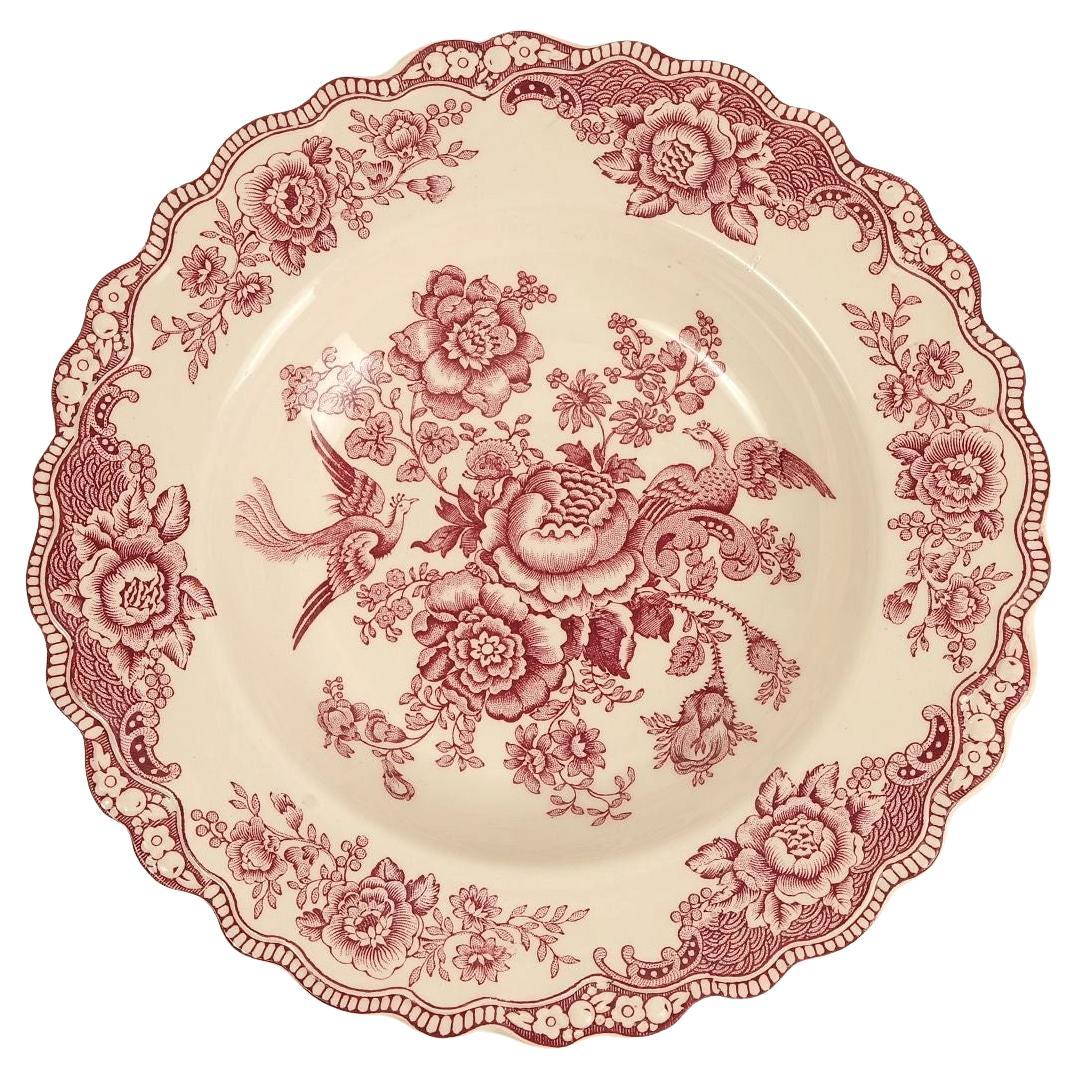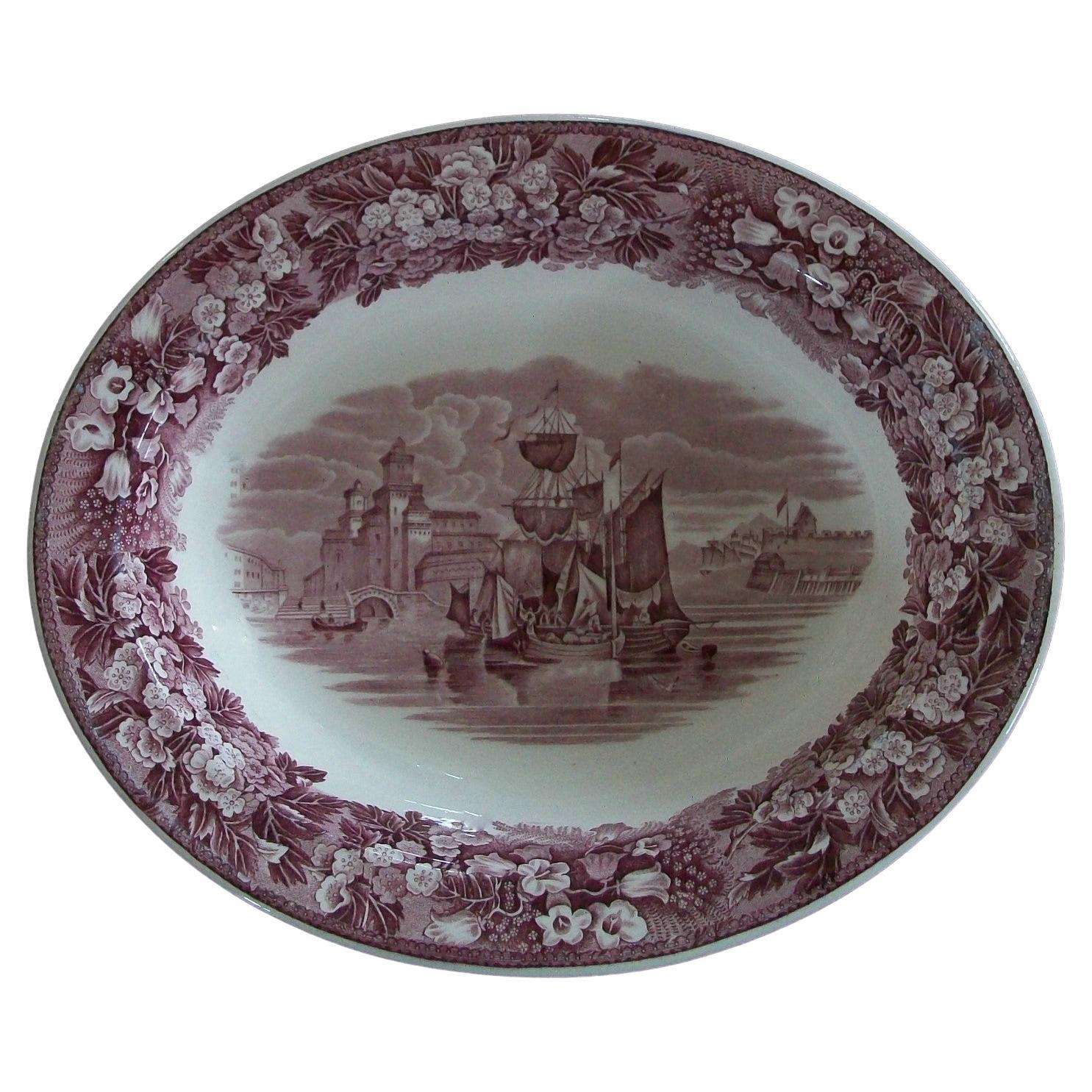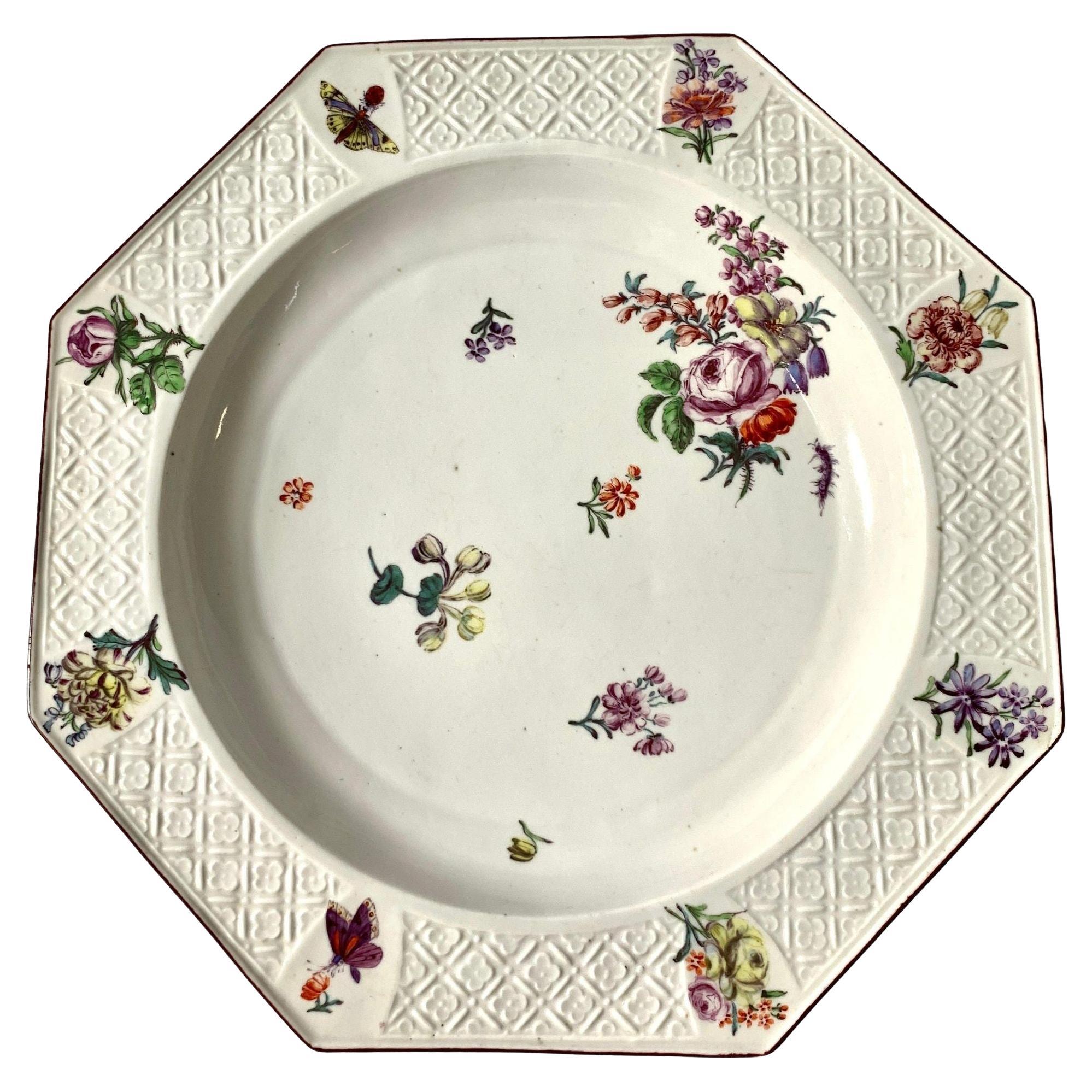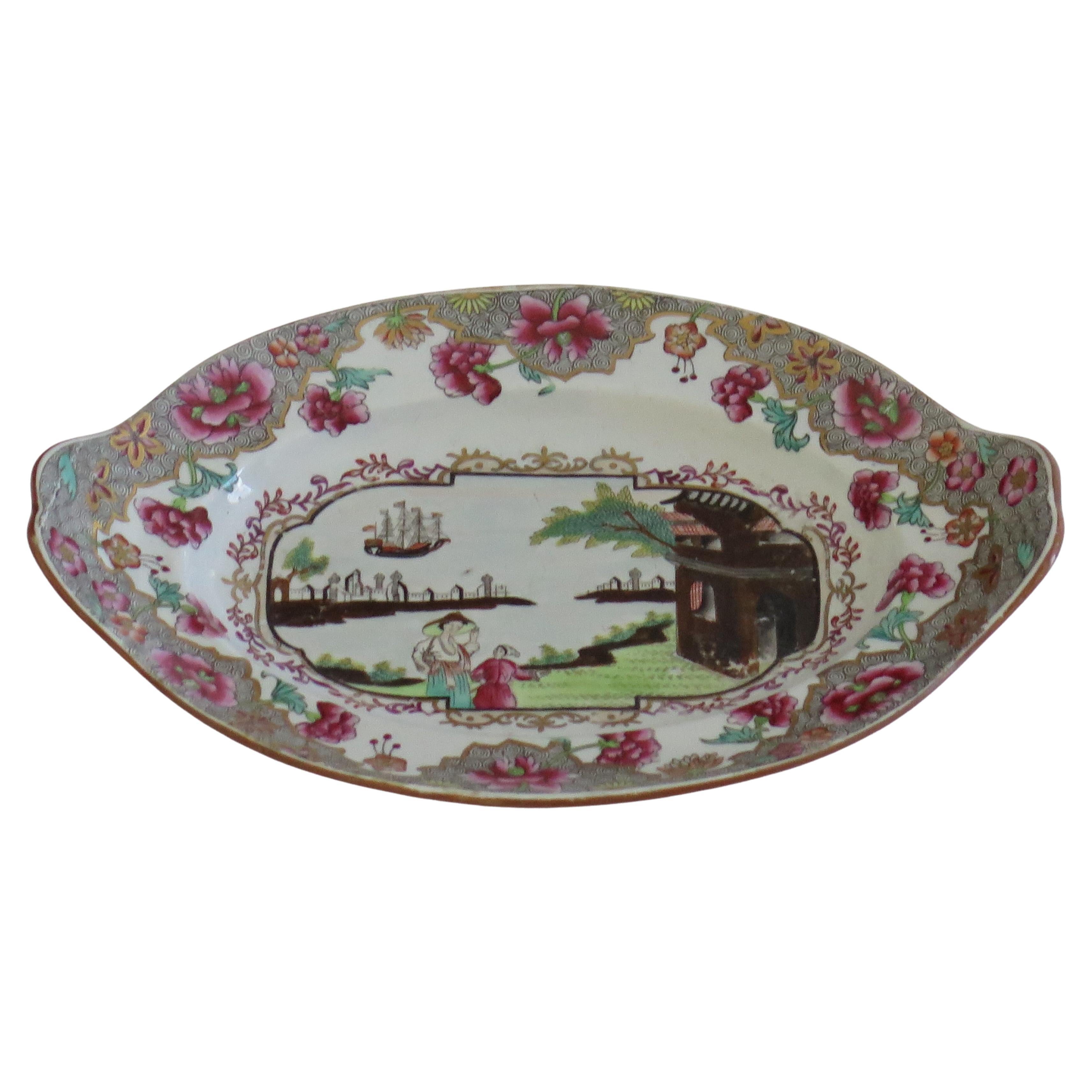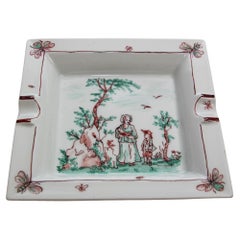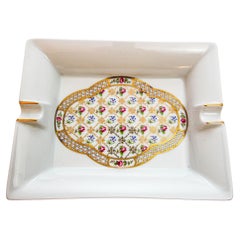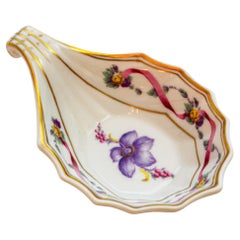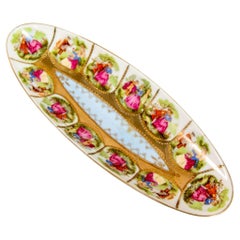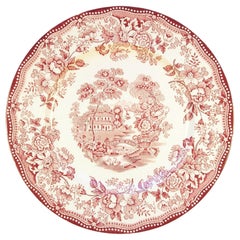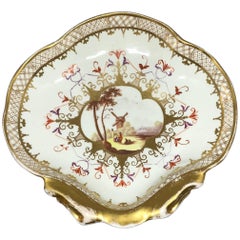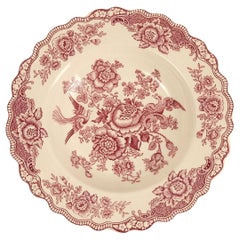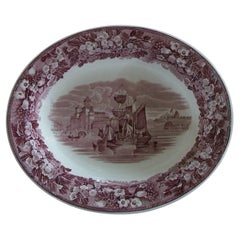Items Similar to Tonquin Red Pink by ROYAL STAFFORDSHIRE by Clarice Cliff made in England Ashtray
Video Loading
Want more images or videos?
Request additional images or videos from the seller
1 of 16
Tonquin Red Pink by ROYAL STAFFORDSHIRE by Clarice Cliff made in England Ashtray
$95
£71.64
€82.85
CA$133.28
A$148.15
CHF 77.66
MX$1,809.32
NOK 969.53
SEK 912.15
DKK 618.40
About the Item
Tonquin Red Pink by ROYAL STAFFORDSHIRE by Clarice Cliff made in England Ashtray.Royal Staffordshire Tonquin Red Pink Clarice Cliff Transferware Dish.Vintage Square dish with a lovely scene of large house by river, bridge, swans & flowers.Use it as a catchall, vide poche, ring jewelry dish or just as a beautiful vintage country design dish.Dimensions: Square 4 x 4 inches x 1 inch height.Crafted In England Discontinued Piece collectible Dish.About transferware:
Transferware refers to a style of ceramics, particularly pottery and porcelain, that became popular in the 18th and 19th centuries. The technique involves transferring a decorative design from an engraved copper plate onto a special tissue paper, which is then applied to the ceramic surface before firing. This method allowed for the mass production of intricate and detailed patterns, making decorative pieces more affordable and accessible to a broader audience.
The transferware process typically involves the following steps:
1) Engraving the Copper Plate: Skilled artisans create intricate designs on a copper plate by incising the image into the metal. These designs often feature scenes, landscapes, or other decorative motifs.
2) Inking the Plate: The engraved copper plate is then coated with ink. The ink settles into the incised lines, creating a detailed representation of the design.
3) Transferring the Design: A sheet of tissue paper is carefully pressed onto the inked plate, and the design is transferred from the plate to the paper. The tissue paper now carries the design in reverse.
4) Applying the Design to Ceramics: The tissue paper is carefully placed onto the surface of the ceramic object, such as a plate, mug, or bowl. The inked design transfers from the paper to the ceramic.
5) Firing the Ceramic: The ceramic object is fired in a kiln to set the transferred design permanently onto the surface. This makes the piece durable and suitable for everyday use.
Transferware became particularly popular during the 19th century, with Staffordshire, England, being a significant center of production. Blue and white transferware, featuring blue designs on a white background, is one of the most well-known types. The designs often depict pastoral scenes, historical events, or classical motifs.
Transferware items were produced in large quantities, making them affordable for a wide range of consumers. The technique revolutionized the ceramics industry and played a role in the democratization of decorative arts during the Industrial Revolution. Today, transferware pieces are collectible and valued for their historical significance and craftsmanship.Manufacturers include Enoch Wood, Royal Staffordshire, Royal Crownford, Spode, Johnson Brothers, and many more.
- Creator:Royal Staffordshire Ceramics 1 (Manufacturer)
- Dimensions:Height: 1 in (2.54 cm)Width: 4 in (10.16 cm)Depth: 4 in (10.16 cm)
- Style:Rustic (In the Style Of)
- Materials and Techniques:
- Place of Origin:
- Period:
- Date of Manufacture:1940
- Condition:
- Seller Location:Moreno Valley, CA
- Reference Number:Seller: A12231stDibs: LU906837726402
About the Seller
5.0
Platinum Seller
Premium sellers with a 4.7+ rating and 24-hour response times
1stDibs seller since 2011
3,097 sales on 1stDibs
Typical response time: 1 hour
- ShippingRetrieving quote...Shipping from: Moreno Valley, CA
- Return Policy
Authenticity Guarantee
In the unlikely event there’s an issue with an item’s authenticity, contact us within 1 year for a full refund. DetailsMoney-Back Guarantee
If your item is not as described, is damaged in transit, or does not arrive, contact us within 7 days for a full refund. Details24-Hour Cancellation
You have a 24-hour grace period in which to reconsider your purchase, with no questions asked.Vetted Professional Sellers
Our world-class sellers must adhere to strict standards for service and quality, maintaining the integrity of our listings.Price-Match Guarantee
If you find that a seller listed the same item for a lower price elsewhere, we’ll match it.Trusted Global Delivery
Our best-in-class carrier network provides specialized shipping options worldwide, including custom delivery.More From This Seller
View AllLimoges France Cigar Ashtray Porcelain Dish Catchall by French Artist 1997
By Limoges
Located in Moreno Valley, CA
Large one of a kind Limoges porcelain ashtray in a square shape featuring a beautiful hand painted country scene from the 19th century depicting a lady with a baby in her hands and a...
Category
Late 20th Century French Decorative Dishes and Vide-Poche
Materials
Porcelain
Limoges France Cigar Ashtray Porcelain Dish Catchall
By Cristalleries De Sevres, Limoges
Located in Moreno Valley, CA
Large Limoges porcelain ashtray in a rectangular shape featuring a beautiful gold trellis and roses design with gold trim, made in France. The hand painted decor is stunning and the ...
Category
Late 20th Century French Louis XIV Ashtrays
Materials
Porcelain
Richard Ginori Porcelain Italian Pittoria Nut Dish 1970s
By Richard Ginori
Located in Moreno Valley, CA
Handcrafted Richard Ginori Italy Porcelain Italian Nut Dish, circa 1970s.
Beautiful Richard Ginori Italian Collectible Vintage Porcelain hand painted dish.
Vintage Richard Ginori Ita...
Category
Late 20th Century Italian Decorative Dishes and Vide-Poche
Materials
Porcelain
Royal Vienna Austria Hand Painted Porcelain Oval Dish circa 1940
By Royal Vienna Porcelain
Located in Moreno Valley, CA
Presenting an exquisite Royal Vienna Austria hand-painted porcelain oval tray dating back to circa 1940.
This dish boasts an elongated shape adorned with opulent gold embellishments....
Category
Early 20th Century Austrian Baroque Revival Decorative Dishes and Vide-P...
Materials
Porcelain
Vintage Asian Porcelain Octagonal Ashtray Dish Catchall
Located in Moreno Valley, CA
Vintage Asian Japanese style dish, ashtray, catchall.
Large vintage ornamental hand painted Asian porcelain tray catchall with clipped edges.
Hand painted octagonal porcelain dish di...
Category
Late 20th Century Japanese Japonisme Decorative Dishes and Vide-Poche
Materials
Porcelain
Vintage Porcelain Ashtray Catchall L. T, France Taillemite Made in France
By Limoges
Located in Moreno Valley, CA
Vintage Limoges Porcelaine Française Ashtray Catchall, “Mousquetaire 1724” by L. Taillemite, France
An elegant French Limoges porcelain ashtray catchall, designed by L. Taillemite an...
Category
Mid-20th Century French French Provincial Decorative Dishes and Vide-Poche
Materials
Porcelain
You May Also Like
ROYAL STAFFORDSHIRE - Clarice Cliff - 'Tonquin' - Dinner Plate - Early 20th C.
By Clarice Cliff, Royal Staffordshire Ceramics 1
Located in Chatham, ON
ROYAL STAFFORDSHIRE (Manufacturer) - Clarice Cliff (Designer) - Tonquin (Pattern) - Red (Color) - Transfer decorated ceramic dinner plate - factory stamp verso - England/United Kingd...
Category
Early 20th Century English Victorian Tableware
Materials
Ceramic
$105 Sale Price
30% Off
English Iron Red and Gilt Shell Form Serving Dish After Meissen
By Coalport Porcelain
Located in New York, NY
English iron red and gilt shell form serving dish after Meissen. English chinoiserie shell form dish after Meissen. A rare coal port gilt porcelain sw...
Category
Antique Mid-19th Century English Porcelain
Materials
Porcelain
Scalloped Crown Ducal Plate in Bristol Pink – Victorian Garden Scene
By Crown Ducal England
Located in Worcester Park, GB
This vintage soup plate by Crown Ducal showcases the timeless elegance of English transferware in a rare “Bristol Pink” hue. The richness of the rosy-red floral pattern, combined wit...
Category
Early 20th Century English Country Platters and Serveware
Materials
Earthenware
Wedgwood, 'Ferrara', Antique Red Transfer Decorated Bowl, U.K, circa 1901
By Wedgwood
Located in Chatham, ON
WEDGWOOD - 'Ferrara' - Antique ceramic serving bowl - transfer decorated in red (Mulberry) on a cream ground - elaborate decoration featuring a central panel with a ship and castle w...
Category
Early 20th Century English Victorian Decorative Dishes and Vide-Poche
Materials
Ceramic
$525 Sale Price
30% Off
Chelsea Red Anchor Porcelain Dish Mid-18th Century England 1752-1756
By Chelsea Porcelain
Located in Katonah, NY
The wares of the Chelsea red anchor period (1752-1758), when this dish was made, are generally thought to be the finest work produced by the factory...
Category
Antique Mid-18th Century English Porcelain
Materials
Porcelain
Spode Stone China Small Serving Dish in Ship Pattern 3068, circa 1810
By Spode
Located in Lincoln, Lincolnshire
This is a good small Serving Dish made of ironstone (Spode's Stone China) in the Ship Pattern, No 3068, produced by the English, Spode factory early in the 19th century, George 111rd Period.
The pattern is called the Ship pattern number 3068, the chinoiserie decoration being transfer printed under-glaze, then very carefully hand painted in bold colored enamels with additional gilding over-glaze. As is usual with Spode ware the standard of hand painted detail is very high.
A plate in this pattern is shown on page 54 of Steven Smith's book; "Spode and Copeland" published by Schiffer. The pattern is in the Chinese taste as produced by many of the English potteries of the time, to compete directly with the large import of Canton or Chinese Export porcelain from China. The dish has a mid brown edge similar to that often seen on Chinese plates.
It is fully marked to the base, with the earlier Spode black printed Stone-China mark...
Category
Antique Early 19th Century English Chinoiserie Ceramics
Materials
Ironstone
More Ways To Browse
Antique Royal Rings
Antique Blue Staffordshire
Large Red Glass Bowl
Pink Glass Dish
Antique Staffordshire Plates
Pink And White Glass Bowl
Staffordshire Flowers
Set Of Staffordshire
Blue And White Transfer
Blue White Staffordshire
Blue Staffordshire Plate
Antique Spode Plates
Staffordshire Porcelain Plates
Transferware England
Swan Bowl
5 Flower Vintage Ring
Spode Flowers
19th Century Mug
